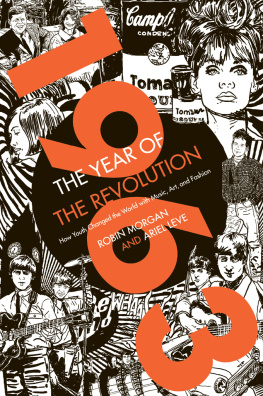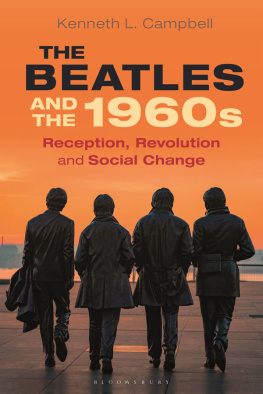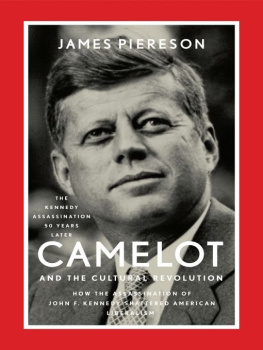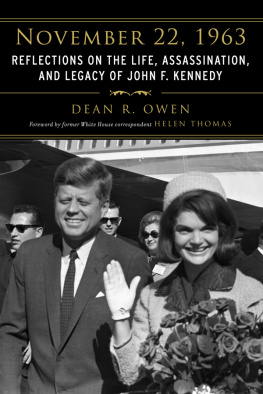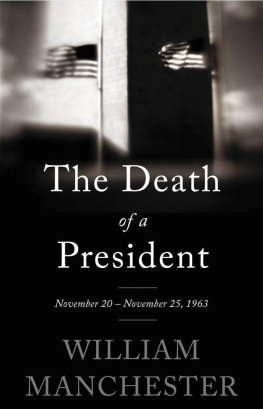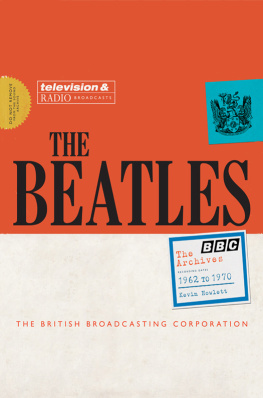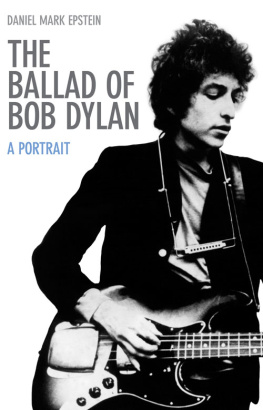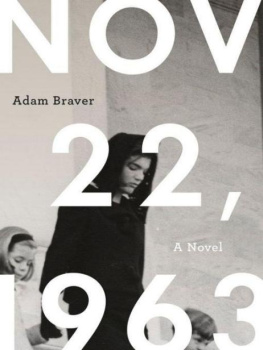CONTENTS
It remains a unique and prophetic coincidenceone that has gone unnoticed for more than fifty years. On January 13, 1963, in Birmingham, England, an attractive young boy band recorded its first appearance on British national television, dazzling viewers with an exuberant tune called Please Please Me. That same night, viewers found a more cerebral experience on the BBC, then the only other TV channel in Britain, when an unknown, tousle-haired American musician made his broadcast debut by intoning a hymn entitled Blowin in the Wind.
Neither the Beatles nor Bob Dylan could have known it, but within the year their voices would enthrall millions of ears around the world. The Beatles would become the poster boys for a revolution, and Dylan would become its prophet.
In 1963, the world was undergoing extraordinary social upheaval triggered by postwar prosperity and adolescent defiance; the tectonic plates of class, money, and power were colliding, and socioreligious rules were crumbling.
It was the year that the Cold War protagonists sought a truce, the race into space shifted up a gear, feminists and civil rights activists flexed their political muscles, a bimbo/spy scandal engulfed the British government, and President John F. Kennedys assassination stunned the world. But as the front pages of history were being printed, there was one scoop slipping by virtually unnoticed: the world was witnessing a youthquake.
In January 1963, teenagers were picking up musical instruments, cameras, paintbrushes, pens, and scissors to challenge conformity. A band calling itself the Rolling Stones auditioned a new bass guitarist and drummer. Eric Clapton, Stevie Nicks, David Bowie, and Elton John were picking at strings and fiddling with keys. On the West Coast, a band aptly named the Beach Boys gained notoriety on Los Angeles radio stations, while in Detroit a girl group changed its name to the Supremes and reached toward the limelight.
In London, an anarchic Irishman pursued a piratical approach to breaking the music industrys middle-of-the-road stranglehold on the airwaves; after buying a fishing trawler, he anchored it in international waters so he could broadcast the kind of music he liked without license or interference. A designer called Mary Quant cut six inchesor moreoff a hem, and an ambitious hairdresser named Vidal Sassoon adapted the principles of architecture to a look that complemented her miniskirted models.
In just one year, the landscape of our lives, loves, and looks changed forever. Musicians, fashion designers, writers, journalists, and artists challenged the established order, forcing cultural elders not only to share political and commercial power with a new elite but to seek its endorsement as well. The social, cultural, political, and technological blueprint for a new world was being drawn and updated daily. And for the first time in history, young people were directing the redesign.
It had been half a century in the making. A generation born of one devastating war at the centurys outset had handed the world over to a generation shaped by a different war. By halftime in the twentieth century, the world was ready for a game changer. Returning servicemen both traumatized and empowered by war, and women who had gone from doing domestic chores to machining bombs, wanted something better for themselves and for their children. People demanded that their appetites, expectations, and rights receive consideration. Many formerly compliant or corralled individuals once respectful of authority and a regular wage began rejecting rigid cultural, social, and political divides.
The baby boomers were growing up in a time of postwar prosperity: rebuilding the world had fueled economic expansion. Wealth rained down in paychecks that bought automobiles, televisions, frocks, and fridges. And plate-size pieces of vinyl called records could produce music on affordable home-based boxes that soon replaced pianos and radios as the primary source of domestic entertainment.
At the threshold of the sixties, the baby boomers were waiting in the wings of history. Their stage had been built; 1963 was the opening night.
Television broadcast a world in flux to their homes, democratizing knowledge and public opinion; it both chronicled and accelerated the shift. In 1963, the baby boomers witnessed Martin Luther King have a dream and the civil rights movement gather speed at the march on Washington while Mississippi burned. They watched the handsome young president, John F. Kennedy, declare Ich bin ein Berliner , double NASAs budget to send men to the moon, and bring the world back from the brink of nuclear waronly to die in an open-top car in Dallas.
They watched the birth of nations as the flag of imperialism was lowered and European empires disintegrated. The first TV program was broadcast by satellite, the first polio vaccine was made freely available. Betty Friedan published The Feminine Mystique , and something called simply the pill was made widely available by prescription to married women. But young single girls needed only to wear a gold ring on their ring finger and lie to a doctor to obtain a packet of contraceptive pills that gave them the power to experiment with their bodies free from the fear of unwanted pregnancy.
And youth had its own history to make. In the fifties, Elvis, Buddy Holly, Little Richard, Howlin Wolf, Muddy Waters, and Chuck Berry had founded the religion, but it was Dylan and the Beatles who became its messiahs in 1963.
In just one year, the sixties were conceived and carried to term. A sixteen-year-old piano student called Reginald Kenneth Dwight was a pupil at Londons esteemed Royal College of Music, practicing Chopin during the day and belting out his own songs in London pubs and clubs at night; he would soon be known as Elton John. And a boy called Eric Clapton got kicked out of art school and joined a band.
Riding their coattails were an American soldier called Jimi Hendrix, who had just been dischargeddishonorablyfrom the 101st Airborne, and a UCLA film student named Jim Morrison who had begun writing songs. Carly Simon started singing in 1963. Mick Jagger and Keith Richards cut their first record. After his performances in New York clubs received mediocre reviews, Paul Simon traveled to England to rethink his music. Nineteen sixty-three was the university, the apprenticeship, the breakout year of the immortal icons who have occupied the universe of fame ever since.
In 1963, young men and women swelled the ranks of aspiring musicians. A young girl named Barbara Hulanicki couldnt find anything to wear, so she borrowed her sisters nickname to brand a shop called Biba. Women stopped wearing garter belts and stockings because Mary Quant miniskirts were so revealing, thereby creating a market for pantyhose. Young guns like David Hockney, Andy Warhol, Allen Jones, and R. B. Kitaj experimented beyond their art school nature classes.
This amorphous new aristocracy rose mainly from the working- and lower-middle classes to represent the baby boomers ideals and aspirationsand their heroes were duly anointed. Music, fashion, and the arts challenged, defied and even transcended class, politics, and religion, and in doing so began to redefine humanity.
No longer were family, formal education, an old school tie, or the long climb up a career ladder the only routes to success. Horizons expanded as fast as vinyl could be pressed and airtime filled. Hot on the heels of music and fashion came film, books, and art. Young people shed convention to express themselves in a subversive riot; they stormed the barricades of a bemused, reactionary old order that thought laws, conventions, and cops could be deployed to corral the counterculture.

